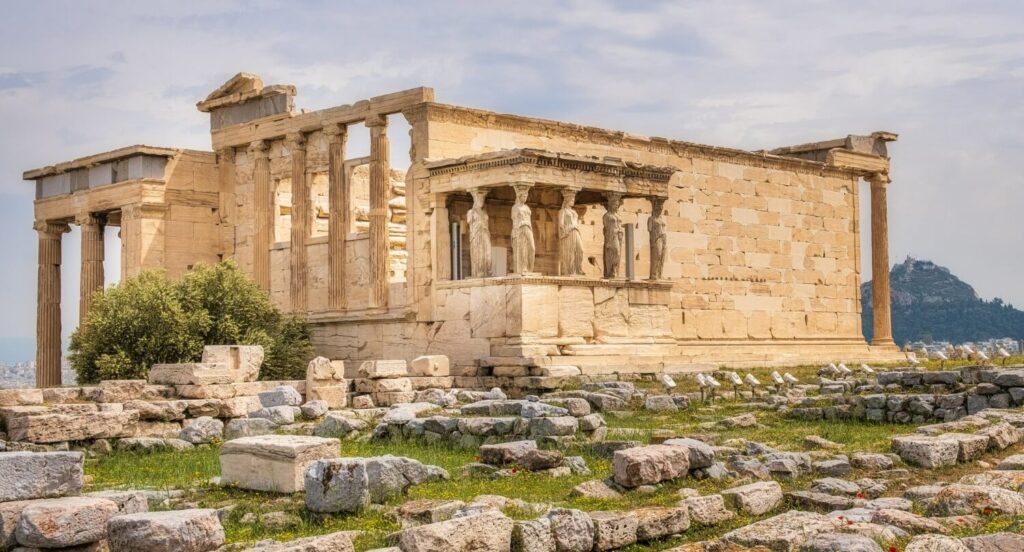Table of Contents
ToggleIntroduction
Nestled in the ancient city of Ephesus, Turkey, the Temple of Artemis stands as a testament to the grandeur and cultural significance of the ancient world. As one of the Seven Wonders of the Ancient World, this majestic temple dedicated to the goddess Artemis has captivated the imagination of scholars and historians for centuries. In this blog, we embark on a journey to explore the historical significance, architectural splendor, religious devotion, and enduring legacy of the Temple of Artemis at Ephesus.
The Ancient City of Ephesus
To understand the context of the temple, we delve into the rich history of Ephesus. We explore its rise as a prominent city in ancient Anatolia, its cultural and economic importance, and the religious practices that shaped its identity.
The Goddess Artemis
We delve into the mythology and worship of Artemis, the Greek goddess of the hunt, wildlife, and fertility. We explore the significance of Artemis in ancient Greek religion and the development of her cult at Ephesus.
Construction and Architecture
The Temple of Artemis at Ephesus was a remarkable architectural achievement of the ancient world. We examine its construction, design, and unique features, such as its massive size, the use of marble, and the intricate sculptural embellishments.
Religious Significance and Rituals
The temple served as a hub for religious activities and pilgrimages. We delve into the rituals, ceremonies, and festivals associated with the worship of Artemis, shedding light on the religious practices and beliefs of the ancient Ephesians.
Cultural and Economic Impact
The Temple of Artemis played a vital role in shaping the cultural and economic landscape of Ephesus. We explore its impact on trade, tourism, and the growth of the city as a center of religious pilgrimage.
Destruction and Reconstruction
The temple’s history was marked by destruction and rebuilding. We examine the multiple instances of destruction, including the famous arson by Herostratus, and the subsequent efforts to rebuild and restore the temple to its former glory.
Excavations and Archaeological Discoveries
Over the years, archaeological excavations have unearthed fascinating insights into the temple and its surroundings. We delve into the discoveries made at the site, including statues, artifacts, and architectural remnants, which provide valuable clues about the temple’s original form.
Legacy and Influence
The Temple of Artemis at Ephesus has left a lasting legacy that extends beyond its physical existence. We explore its impact on art, literature, and architecture throughout history, as well as its influence on subsequent religious and cultural practices.
Modern Preservation and Visitor Experience
Today, the Temple of Artemis is a protected archaeological site and a popular tourist destination. We discuss the efforts made to preserve and showcase the remains of the temple, as well as the visitor experience and the insights it provides into the ancient world.
Rumors
One of the most intriguing rumors surrounding the Temple of Artemis at Ephesus involves a legendary act of arson committed by a man named Herostratus. According to ancient accounts, Herostratus set fire to the temple in 356 BCE, driven by a desire for infamy and eternal recognition.
The story goes that Herostratus, realizing the magnificence and fame associated with the temple, sought to ensure that his name would be remembered throughout history. In an act of deliberate destruction, he ignited the temple, causing significant damage and leading to the collapse of the structure’s wooden roof.
The authorities, recognizing the severity of the crime, swiftly executed Herostratus. However, in an attempt to discourage any glorification of his actions, they imposed a decree that forbade the utterance of his name under penalty of death.
Despite the efforts to erase his memory, Herostratus succeeded in leaving a lasting mark on history. His act of arson brought widespread attention to the Temple of Artemis, perpetuating its fame and ensuring that his name would be forever associated with the destruction of the magnificent structure.
This rumor of Herostratus’ intentional destruction of the Temple of Artemis has been perpetuated through various ancient accounts and literary works. While the historical accuracy of the story remains uncertain, it highlights the allure and fascination that the temple held, as well as the destructive lengths some individuals were willing to go to achieve notoriety.
It is important to approach such rumors with caution, as they often blend fact with fiction and may be embellished or distorted over time. Nonetheless, the story of Herostratus and the supposed arson of the Temple of Artemis add an intriguing layer of mystery and drama to the temple’s already captivating history.
Conclusion
The Temple of Artemis at Ephesus stands as a testament to human creativity, devotion, and the enduring quest for spiritual connection. Its architectural grandeur, cultural significance, and historical legacy continue to inspire awe and admiration. Though the temple may be reduced to fragments, the echoes of its splendor and the stories it holds serve as a window into the ancient past, reminding us of the remarkable achievements of our ancestors and the rich tapestry of human history.



